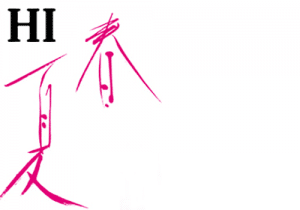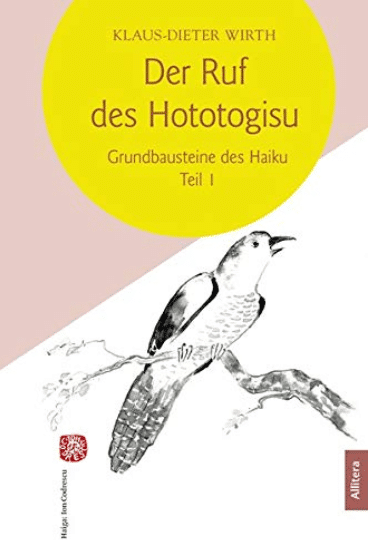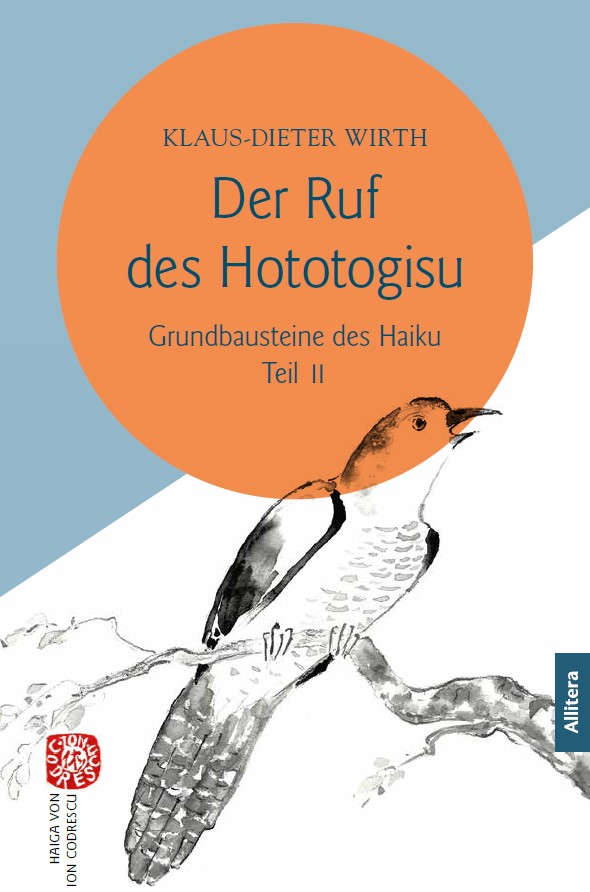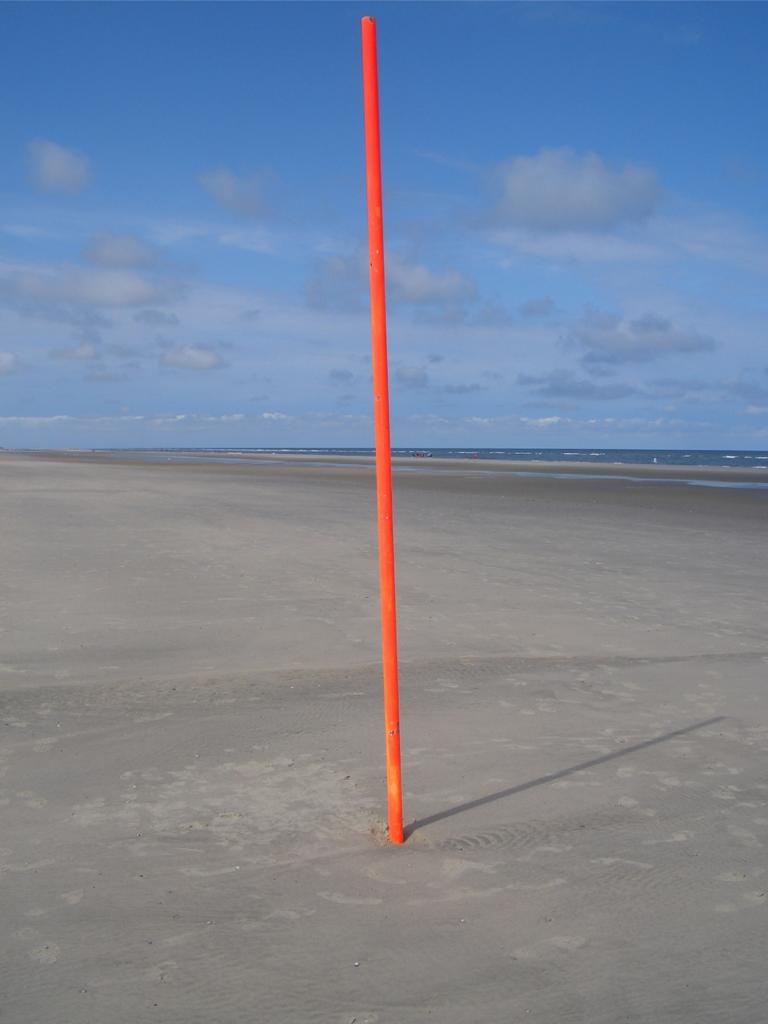Im Zeitraum November 2015 bis Januar 2016 wurden insgesamt 231 Haiku und 51 Tanka von 88 Autorinnen und Autoren für diese Auswahl eingereicht.
Einsendeschluss war der 15. Januar 2016. Diese Texte wurden vor Beginn der Auswahl von mir anonymisiert. Die Jury bestand aus Silvia Kempen, Birgit Heid und Horst-Oliver Buchholz. Die Mitglieder der Auswahlgruppe reichten keine eigenen Texte ein.
Alle ausgewählten Texte – 44 Haiku und 10 Tanka – werden in der Reihenfolge der erreichten Punktzahlen veröffentlicht.
„Ein Haiku/ein Tanka, das mich besonders anspricht“ – unter diesem Motto besteht für jedes Jurymitglied die Möglichkeit, bis zu drei Texte auszusuchen (noch anonymisiert), hier vorzustellen und zu kommentieren.
Achtung!
Für das nächste Heft (Nr. 113) findet wieder unser jährliches Kukai statt. Diesmal in Zusammenarbeit mit dem Hamburger Haiku Verlag, Leitung: Stefan Wolfschütz. Von jedem Teilnehmer kann ein Haiku zum Thema „Sonnenwende“ eingereicht werden. Das Kukai findet vom 9. bis zum 14. April 2016 im Internet statt. Die Teilnahmemodalitäten werden noch bekanntgegeben.
Mitglieder, die nicht am Kukai teilnehmen, können ein Haiku/Tanka für die Mitgliederseite im SG 113 einsenden.
Petra Klingl
Ein Haiku, das mich besonders anspricht
Regenbogen
die Streifen
auf ihrem HochzeitskleidAngelika Holweger
Die Streifen auf dem Hochzeitskleid sind es, die mir bei diesem Haiku besonders ins Auge fielen. Bei einem Hochzeitskleid erwartet man im Allgemeinen, dass es sich in einem einwandfreien und strahlend schönen Zustand befindet, mit einer Ausnahme: Nach der durchtanzten Hochzeitsnacht, wenn es gerade noch den Weg zu einem Kleiderbügel gefunden hat und sich nun als Zeuge der weiteren Geschehnisse wiederfindet. Da mag es an sich herabblicken, einen Seufzer ob seiner in den Hintergrund gerückten Schönheit von sich geben und die Flecken, Streifen sowie den gerissenen Saum zählen. Und einen zweiten, vielleicht befreiten oder gar sehnsüchtigen Seufzer, weil es womöglich bald wieder auf Wanderschaft gehen wird. Vielleicht wird es aber auch nach soeben getanem Dienst und der obligatorischen Reinigung den bedeutend längeren Teil seines Daseins in einem dunklen Schrank verbringen und langsam vor sich hin gilben, Streifen in den Längsfalten bildend.
Gar nicht in den Sinn kam mir der sicherlich auch naheliegende Gedanke, dass der Stoff des Kleides mit einem Streifenmuster oder zahlreichen Lagen aus Seide oder Streifenbordüren versehen sein könnte, wobei der Fantasie keine Grenzen gesetzt sind. Nein, ich denke, solcherlei Streifen wären nicht derart zentral erwähnt worden. Denn die Streifen selbst sind es, die sich hier ungeniert in den Mittelpunkt stellen, ohne jedoch ihre Herkunft zu verraten. Oder doch? Deutet der Regenbogen auf bunte Streifen oder auf Wasserstreifen hin? Könnte gerade ein Schauer niedergegangen sein und das Hochzeitspaar dazu veranlasst haben, sich dem Naturereignis hinzugeben? Die Versuchung liegt nahe, eine Verbindung zum Regenbogen herzustellen, aber zwingend ist dies keineswegs. Apropos Versuchung: Wären es tatsächlich Wasserstreifen, läge bei dieser Vorstellung durchaus ein Streifen Erotik in der noch regenfeuchten Luft.
Doch führt das Haiku noch in weitere Regionen der Gedanken. Streifen, die ausdrücklich benannt werden, und dies war mein erster Eindruck, sind auf einem Brautkleid ein Zeichen der Verschmutzung und mithin der Vergänglichkeit, und das ausgerechnet auf dem Hochzeitsfest! Wäre da nicht der symbolbehaftete Regenbogen, der ausgleichend die schöne Seite der Vergänglichkeit zeigt, vielleicht die Versöhnung nach einem Streit, einem reinigenden Gewitter. Und das ausgerechnet auf dem Hochzeitsfest! Nicht außergewöhnlich, wenn unterschiedlichste Verwandtschaftsteile in feuchtfröhlicher Runde aufeinandertreffen oder sich der Stress, der mit der Organisation und Durchführung einer Hochzeitsfeier verbunden ist, im Zorn entlädt. Gelingt es den sich in die Haare gekommenen Streithanseln, sich noch zu versöhnen, wird ihnen sicherlich die nämliche Bewunderung entgegengebracht werden, wie sie auch ein Regenbogen auf sich zieht.
Und die schmutzigen Streifen? Vielleicht werden sie sich als hartnäckig herausstellen und der ehemaligen Trägerin vor Augen führen, dass das Leben seinen Glanz zusehends einbüßt und stattdessen Kratzer und Streifen hinterlässt, die tendenziell die praktischen Erwägungen in den Vordergrund treten lassen. Wäre da nicht der Regenbogen.
Kommentiert von Birgit Heid
erster Nachtfrost
der Chor der bunten Farben
wechselt die TonartChristoph Blumentrath
Der berühmte Maler Wassily Kandinsky hat schon vor 100 Jahren erkannt, dass Farben klingen, er schrieb das Theaterstück „Der gelbe Klang“. Jede Farbe hat ihren eigenen Klang. Das nehmen vor allem hochsensible Menschen und Künstler wahr, indem verschiedene Sinne miteinander verkoppelt sind. Das nennt man auch Synästhesie.
Ein „Chor der Farben“ sind somit die Klänge verschiedener Farben. Was das „bunte“ betrifft, so mag manch eine/r denken, dass bei „bunten Farben“ das „bunt“ überflüssig ist, weil Farbe an sich schon bunt ist, aber weit gefehlt, es gibt bunte und unbunte Farben. Als bunte Farben werden Farben in ihrer größten Sättigung bezeichnet und als unbunte Farben schwarz, weiß und alle mit grau entsättigten Farben, sowie alle mit weiß entfärbten Farben. „Der Chor der bunten Farben“ meint somit die Klänge der verschiedenen Farben in ihrer höchsten Sättigung.
Späte Rosen in sattem Rot, das Gras noch saftig grün, kräftig lilafarbene Astern und und und … Auf all diese „gesättigten Farben“ = „bunten Farben“ legt sich das Weiß des Frostes. Das ist natürlich nach dem ersten Nachtfrost am auffälligsten und am schönsten, weil da die Blüten und Gräser noch nicht geschädigt sind. Wegen der „Entbuntisierung“ durch das Weiß des Frostes werden die Töne anders, es „wechselt die Tonart“.
In diesem Haiku wird die bunte Welt mit all ihren Farben und deren Klängen dargestellt, die durch das Ereignis Frost über Nacht eine andere Welt mit anderen Farben und somit anderen Klängen ist.
Dahinter steht, dass nichts beständig ist, durch ein kleines profanes Ereignis ist plötzlich alles ganz anders. Diese Veränderlichkeit wird hier sehr bildlich und durch das doppelte „der“ auch klanglich dargestellt. Für mich ein gelungenes Haiku, auch wenn es nicht die Höchstpunktzahl erreicht hat.
Kommentiert von Silvia Kempen
große Pause –
eine Handvoll
Konfetti in den WindChristoph Blumentrath
Der „große[n] Pause“ vorangegangen ist der Unterricht, der sicher nicht immer Spaß macht. Kommt man zur Schule, heißt es ja auch „der Ernst des Lebens beginnt“. Aber die Pause, von vielen Kindern sicher sehnsüchtig erwartet. Da darf man sich bewegen, rennen, laufen, schreien … und übermütig sein.
Dieser Übermut wird durch „eine Handvoll Konfetti“ ausgedrückt. Konfetti steht für Spaß, es gibt ihn auf Partys und beim Karneval.
„in den Wind“ – da sieht man eben dieses Konfetti fliegen, wahrscheinlich mehr und besser als bei einer Party im geschlossenen Raum. Es fliegt aber auch fort, sodass der Spaß wieder vorbei ist, und ebenso endet die „große Pause“.
Passend zur inhaltlichen Aussage ist die erste Zeile sprachlich eher schwer, während die zweite und dritte Zeile leicht sind, wie der Wind. Ein schlichtes und schönes Haiku.
Kommentiert von Silvia Kempen
Was spricht der sand
– – – – – – – – –
ins schweigen der wüste?Bernhard Haupeltshofer
Ja, ich höre ihn schon, den Chor der Zweifler, der Skeptiker, der Empörten, vielleicht gar: „Das ist doch kein Haiku!“. Und tatsächlich sind wir mit diesem Beitrag mitten drin in der Diskussion, was noch ein Haiku ist, was nicht, wie weit man die Grenzen vom Traditionellen verschieben kann und sich dennoch auf Haiku-Terrain befindet. Und, zugegeben, auch in der Jury waren diese Zeilen umstritten. Von glatter Ablehnung bis zu Begeisterung. Für beide Pole und alle Nuancen dazwischen gibt es gute Gründe, keine Frage. Denn klar ist, hier liegt ein Haiku vor, das die Grenzen des Traditionellen, auch der modernen Tradition, überschreitet. Zugegeben ferner: Ich liebe eigentlich die traditionellen Haiku und jene, die die Tradition achten, aus ihr kommen, und stehe Experimenten zumeist skeptisch bis ablehnend gegenüber.
Dieses Haiku aber hat mich berührt. Es ist das Haiku aus der langen Liste, zu dem ich immer wieder zurückkehrte. Und wie so oft bei Haiku, die einen berühren, kann man den Grund dafür oft nicht genau benennen, der Sache buchstäblich nicht so recht auf den Grund gehen. Aber muss man das? Warum nicht ein Haiku einfach unkommentiert wirken lassen? Die starke Wirkung, die dieses Haiku auf mich ausübte, war wohl die vollkommene Ruhe, die für mich aus den Zeilen strahlt, die sich weitete bis in mich, den Leser, hinein.
Was spricht der Sand? Nun, der Sand spricht natürlich nicht im eigentlichen Sinne, aber das Bild, das die Zeile auslöst, das sie in mir auslöste, das spricht – vieles, eindringlich und leise. Eine weite Wüstenlandschaft, hügelig, wogend, vielleicht etwas öde, baum- und strauchlos, aber unberührt und rein. So entsteht Ruhe. Die wortlose zweite Zeile nimmt das Bild auf, vertieft es. Nichts gibt es zu sagen in dieser Ruhe, jedes Wort würde sie brechen und so verweilt auch der Leser einen Augenblick wortlos; ein leerer Raum, in den die Ruhe eindringt, ihn füllt. Die dritte Zeile nimmt diese Ruhe auf und benennt sie als „Schweigen“. Doch was wird gesprochen, wie der einleitende Vers sagt? Es ist ein non-verbales Sprechen, meine ich, es ist das hervorgerufene Bild selbst, das spricht durch seine starke Wirkung. Doch nichts Bestimmtes wird gesagt, keine Aussage gemacht, es bleibt alles offen – offen für den Leser, der das Schweigen mit seinen Gedanken füllt.
Gelungen auch der Rhythmus im Haiku, die Silben fließen gleichförmig dahin, harmonisch; ein Rhythmus, dessen Gleichförmigkeit dem Bild der Ruhe weitere Kraft gibt. So finden Form und Inhalt zueinander und werden zu einem harmonischen Ganzen. Einfach gut. Einfach und gut.
Ein experimentelles Haiku, mag sein, ja. Hier aber ist es gelungen. Finde ich. Ob jetzt auch der Chor der Zweifler schweigt?
Kommentiert von Horst-Oliver Buchholz
Die Auswahl
15 Punkte konnten erreicht werden
Frühjahrsputz
ganz hinten im Schrank
seine TeetasseGabriele Hartmann
14 Punkte
der leere Stuhl
der Arbeitskollegin …
ZwiegesprächClaudia Brefeld
13 Punkte
am Grabstein
Anonym
machen die Gärtner PauseAnke Holtz
13 Punkte
Stadtführung –
in meiner Tasche die Samen
wilder MalvenEva Limbach
13 Punkte
Weihnachten ohne Schnee
die leeren Zimmer
der KinderEleonore Nickolay
13 Punkte
Der Klang der Worte
„meine Eltern“
Wellen am StrandMarianne Reder
13 Punkte
am neujahrsmorgen
die schuhe gezählt –
zweimalBernhard Haupeltshofer
13 Punkte
weiße Weite
Schritte
in eine andere StilleIlse Jacobson
12 Punkte
er erzählt mir
von bunten Schmetterlingen –
coming outRamona Linke
12 Punkte
Zierkürbisse
ein Künstler kauft sich
neue IdeenKlaus-Dieter Wirth
12 Punkte
Hospizbesuch
aus einem Zimmer
when I’m 64Martin Berner
11 Punkte
erster Nachtfrost
der Chor der bunten Farben
wechselt die TonartChristof Blumentrath
11 Punkte
große Pause –
eine Handvoll Konfetti
in den WindChristof Blumentrath
11 Punkte
Zeit …
der Elefantenbulle
verlässt die HerdeHans-Jürgen Göhrung
11 Punkte
Kuhglockengeläut
wie gut, sagst du, dass wir
uns fandenGabriele Hartmann
11 Punkte
Memoiren
am Ende meiner Reise
derselbe MondGabriele Hartmann
11 Punkte
Besuchszeit
sie legt Rouge auf
ihr LächelnEleonore Nickolay
11 Punkte
das spiel ist aus
der junge legt die karten
auf opas sargRené Possél
11 Punkte
das ungesagte
auf der halb blinden scheibe
unser atemrauchBirgit Schaldach-Helmlechner
11 Punkte
Bleigießen
was da auf uns zukommt
scheint so schwerHeinz Schneemann
11 Punkte
du kommst –
am kahlen Kirschbaum blühen
Regentropfen aufAngelica Seithe
11 Punkte
aufs grab leg ich nüsse
bitte, liebe eichhörnchen
spielt mit ihm!Peter Wißmann
11 Punkte
Canastarunde
an der Haustür
drei KönigeRalf Bröker
10 Punkte
Bürgerabend
Die Tür schließt
vor der MondsichelClaudius Gottstein
10 Punkte
laute Parolen
Sie stemmen sich
gegen den WindMartina Heinisch
10 Punkte
ein Molekül
der Milchstraße
HeimatmondDietmar Tauchner
10 Punkte
Testamentseröffnung
wieder ihre Angst
vor EnthüllungenMartin Berner
9 Punkte
Sanssouci –
eine Tasse Tee lang
der Blick der PuttenGerd Börner
9 Punkte
jüdischer Friedhof
der Sturm
hat einen Zweig niedergelegtClaudia Brefeld
9 Punkte
Mondlicht
Schatten der verlassenen Mühle
im BachZorka Cordasevic
9 Punkte
Herbstnebel
in der Allee
auf der Stelle tretenGisela Farenholtz
9 Punkte
SMS
das Display
verzieht keine MieneHans-Jürgen Göhrung
9 Punkte
Winterlichter
schneide einen Baum
aus der NachtMartina Heinisch
9 Punkte
des Menhirs Schatten
über das schneebedeckte Feld
ich lausche dem MondRamona Linke
9 Punkte
frost
der duft
innerer bilderHelga Stania
9 Punkte
Abendläuten
ein Rollladen schließt
den TagFriedrich Winzer
9 Punkte
letzter Griff
zu den Sternen
aus ZimtRegina Franziska Fischer
8 Punkte
mit dem Bleistift
vor Sonnenblumen
und GlasflügelfalternRegina Franziska Fischer
8 Punkte
Was spricht der sand
– – – – – – – –
ins schweigen der wüste?Bernhard Haupeltshofer
8 Punkte
in der letzten Glut
auflodernd
alte LiebesbriefeAnke Holtz
8 Punkte
Des Schneemanns
schwarze Augen –
in der Pfütze.Manfred Karlinger
8 Punkte
Frühlingswärme –
ich öffne meine Augen
wie zum ersten MalGérard Krebs
8 Punkte
Radiomusik.
Unser Lied platzt zwischen uns
in die Funkstille.Wolfgang Rödig
8 Punkte
gähnendes Kätzchen
Kirschbaumknospen kurz
vor dem AufplatzenKlaus-Dieter Wirth
8 Punkte
Tawara Machi –
was für eine Frau sie ist,
das weiß ich nicht …
doch rinnt beim Blättern plötzlich
etwas Blut von meinem FingerTony Böhle
13 Punkte
blühende Knospen
mein Blick wandert, wandert
am Stamm entlang
zu den Jahresringen
kannst du dich nicht entscheiden?Gabriele Hartmann
13 Punkte
malzige Süße
und der Rauch von Torffeuer
in meinen Händen
ein zerschlissener Fahrplan
den ich längst nicht mehr braucheEva Limbach
12 Punkte
Der Dreikönigswind
trägt den Geruch von
Sauerfutter …
Auf meinem Heimweg nur eine
Katzenspur im SchneeRamona Linke
12 Punkte
auf Gipfeln
jenseits der letzten Bäume
wechseln weiße Gämsen …
in schlaflosen Träumen
jage ich ihnen nachFrank Dietrich
11 Punkte
Die grauen Bärte
der Farne. Sie schaukeln sacht
die Bilder herbei
von Greisen vor spätem Licht,
wie sie die Köpfe wiegen.Guido Blietz
9 Punkte
Morgenregen –
am Waldrand schon hörbar
das Quietschen der Bahn.
Im Laubrascheln Gedanken
an die HausaufgabenTaiki Haijin
9 Punkte
abend für abend
am fenster gegenüber
in weißem nachthemd
erscheint sie die alte frau
nacht für nacht brennt das lichtTheo Schmich
9 Punkte
die Schwalben sind
noch nicht zurückgekehrt
die Knospen fest verschlossen
und meine Winterwunden
noch lange nicht verheiltFrank Dietrich
8 Punkte
Nachtwanderung
unterm Vollmond leise
das Flüstern des Strandhafers
Wie damals, als wir
noch keine Antworten wusstenRamona Linke
8 Punkte







